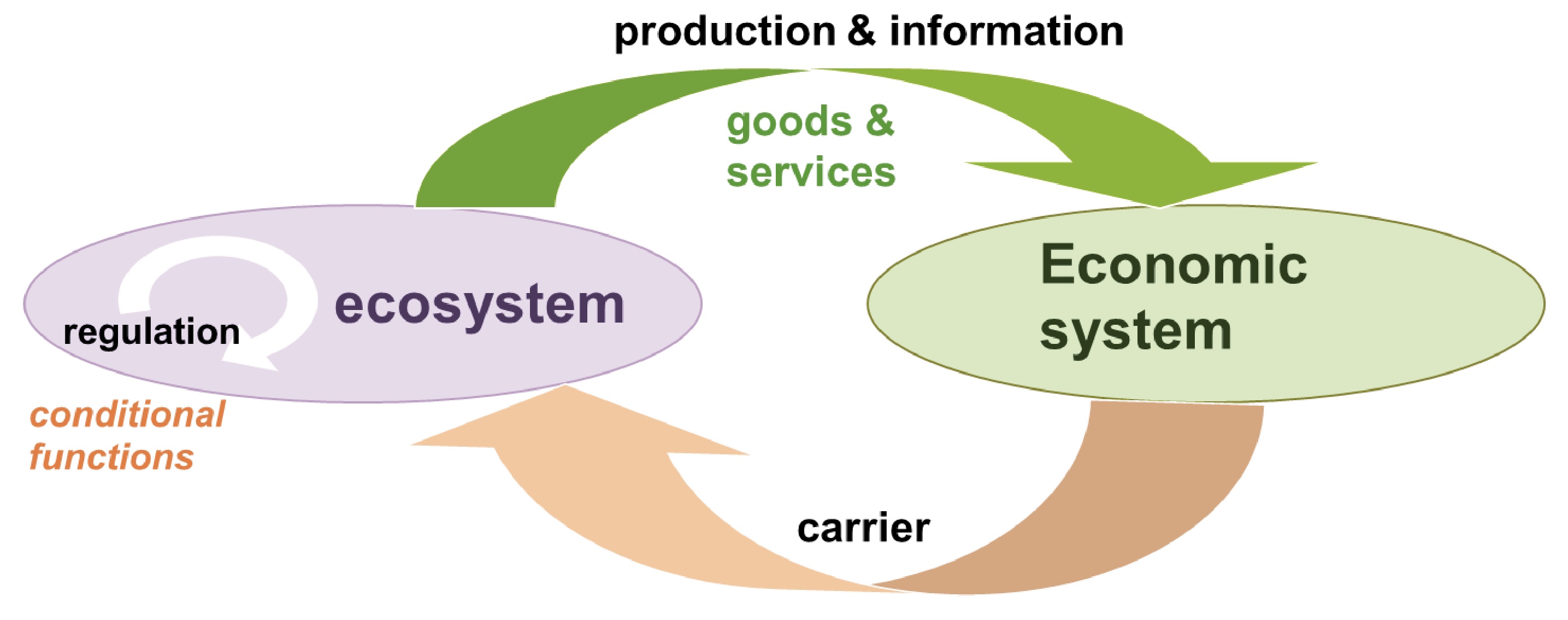How ecosystem benefits can make a difference in public decisions
Downloads
DOI:
https://doi.org/10.47982/rius.7.137Keywords:
ecosystem valuation, national guideline, cost benefit analysis, goods and services, inundation area, estuary, functions of natureAbstract
‘Building with Nature’ solutions seem like a logical alternative to technical solutions. Working with nature instead of against it might save civil engineering costs. But will it also generate additional civil engineering benefits? Typical engineering benefits are related to flood prevention, transportation and sand mining. Both technical and natural solutions can produce these benefits. Natural solutions, however, may produce additional ecosystem benefits. These are rarely accounted for in investment decisions about engineering projects. This is not surprising as there are no rules stating that and how these benefits should be calculated. The Netherlands is the first country in Europe to install a national guideline for monetising ecosystem benefits within cost-benefit analyses in the public sector. This article shows how this guideline provides a systematic approach to prevent both over- and under-estimations of ecosystem benefits. The key to this approach is to make a distinction between goods and services that directly generate welfare while linking those to conditional functions that indirectly generate welfare. This approach is applied to flood defence in the Scheldt estuary in Belgium. It resulted in benefit estimates that were large enough to compensate for the extra cost of natural solutions. Taking ecosystem benefits into account influenced the flood protection decision of the national government: the natural ‘inundation areas’-solution was preferred to the technical solution of ‘dyke heightening’.
How to Cite
Published
Issue
Section
References
Arrow, K., Solow, R., Portney, P. R., Leamer, E. E., Radner, R., & Schuman, H. (1993). Report of the NOAA panel on contingent valuation. Federal register, 58(10), 4601-4614.
Barbier, E. B. (1993). Sustainable use of wetlands valuing tropical wetland benefits: economic methodologies and applications. Geographical Journal, 159(1), 22-32.
Bateman, I. J., Carson, R. T., Day, B., Hanemann, M., Hanley, N., Hett, T., ... & Swanson, J. (2002). Economic valuation with stated preference techniques: a manual. Edward Elgar.
Brouwer, R., de Groot, R. S., Ruijgrok, E., & Verbruggen, H. (2003). De kosten en baten van natuur en milieu [The costs and benefits of nature and environment]. ArenA, 3, 37-40.
Costanza, R., d’Arge, R., de Groot, R., Farber, S., Grasso, M., Hannon, B., ... & Van Den Belt, M. (1997). The value of the world’s ecosystem services and natural capital. nature, 387(6630), 253-260.
Cox, T., Buis, K. & Meire, P. (2004). Datacompilatie in het kader van SMER en MKBA voor de actualisatie van het Sigmaplan [Data compilation for the strategic environmental impact assessment and socio-economic cost benefit analysis of the actualisation of the Sigma plan]. Universiteit Antwerpen.
Gren, M., Folke, C., Turner, K., & Batemen, I. (1994). Primary and secondary values of wetland ecosystems. Environmental and resource economics, 4(1), 55-74.
Freeman, A. M. (1986). On assessing the state of the art of the contingent valuation method of valuing environmental changes. In R.G. Cummings, D.S. Brookshire, & W.D. Schulze (Eds.), Valuing environmental goods: An assessment of the contingent valuation method, 148-161. Rowman and Allanheld.
De Groot, R. S. (1992). Functions of nature: evaluation of nature in environmental planning, management and decision making. Wolters-Noordhoff BV.
Hanley, N., & Spash, C. L. (1993). Cost–Benefit Analysis and the Environment. Edward Elgar Publishing.
Harms,W.B. (1973). Oecologische natuurwaardering in het kader van de evaluatie van natuurfuncties [Ecological valuation of nature within the framework of evaluating functions of nature]. Afd. Geobotanie, Katholieke Universiteit Nijmegen/Instituut voor Milieuvraagstukken, Vrije Universiteit Amsterdam.
Kirkland, W. T. (1988). Preserving the Whangamarino wetland- an application of the contingent valuation methods. Massey University. http://hdl.handle.net/10179/5831
Layard, P. R. G., & Glaister, S. (1994). Cost-Benefit Analysis. Cambridge University Press. https://doi.org/10.2277/0521466741
Millennium Ecosystem Assessment. (2005). Ecosystems and Human Well-Being: Health Synthesis. World Health Organization. http://www.bioquest.org/wp-content/blogs.dir/files/2009/06/ecosystems-and-health.pdf
Mitchell, R. C., Carson, R. T., & Carson, R. T. (1989). Using surveys to value public goods: the contingent valuation method. Resources for the Future.
Pears, D. W., & Moran, D. (1994). The Economic Value of Biodiversity. Earthscan Publications.
Pearce, D. W., & Turner, R. K. (1990). Economics of natural resources and the environment. JHU press.
Perman, R., Ma, Y., & McGilvray, J. (1996). Natural and Environmental Resource Economics. Longan, London.
Ruijgrok, E. C. M., Brouwer, R., Verbruggen, H., de Groot, R. S., & Bos, E. J. (2004). Waardering van natuur, water en bodem in maatschappelijke kosten baten analyses: een handreiking ter aanvulling op de OEI-Leidraad [Valuation of nature, water and soil in CBA; a guideline complementary to the national CBA guideline]. Witteveen+ Bos.
Ruijgrok, E.C.M. & Lorenz, C. (2004). MKBA Sigmaplan Onderdeel Ecosysteemwaardering [CBA Sigmaplan, Part Ecosystem valuation]. Witteveen+Bos.
Seidl, A. F., & Moraes, A. S. (2000). Global valuation of ecosystem services: application to the Pantanal da Nhecolandia, Brazil. Ecological Economics, 33(1), 1–6. https://doi.org/10.1016/s0921-8009(99)00146-9
Sorg, C. F. & Loomis, J. B. (1986). Economic Value of Idaho Sport Fisheries with an Update on Valuation Techniques. North American Journal of Fisheries Management, 6, 494-503. https://doi.org/10.1577/1548-8659(1986)6<494:EVOISF>2.0.CO;2
Taylor, L. (2001). The Hedonic Method. In P. Champ, K. Boyle, & T. Brown (Eds.), In A Primer on Nonmarket Valuation, 331–393. Kluwer Academic Publishers. https://doi.org/10.1007/978-94-007-0826-6_10
Ward, F. A., & Beal, D. (2000). Valuing Nature with Travel Cost Models: A Manual. Edward Elgar Publishing.
van der Maarel, E,, & Dauvellier, P.L. (1978). Naar een globaal ecologisch model voor de ruimtelijke ontwikkeling van Nederland [Towards a global ecological model for the spatial development of the Netherlands]. Staatsuitgeverij.
van Holst, B., Molle, W. T. M., Botterweg, T. H., Blok, P. M., Koss, M., Meijer, J. W., ... & van Liefland, W. M. (1978). Een haven op het Balgzand? Een economische en ecologische afweging van de voor-en nadelen van een beperkte zeehavenontwikkeling ten behoeve van Den Helder [A harbor on Balgzand? An economic and ecological trade off of the pros and cons of a limited harbour development for Den Helder]. Stichting het Nederlands Economisch Instituut/Rijksinstituut voor Natuurbeheer
van Wetten, J., Joordens, J., van Dorp, M., & Bijvoet, L. (1999). De schaduwkant van Waddengas [The shadow-side of the natural gas from the Wadden Sea]. AIDEnvironment.





